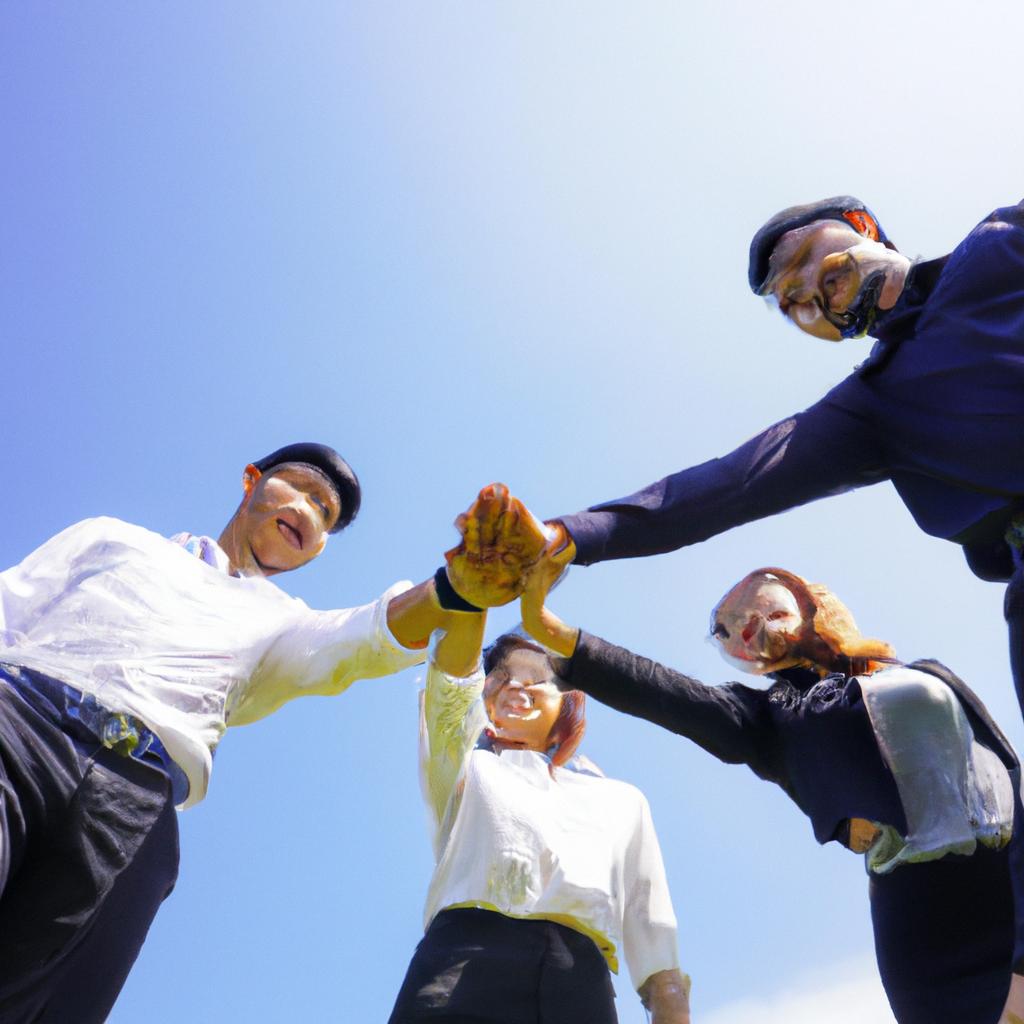Unity in Motion: How Team Sports Foster Camaraderie and Collaborative Skills

In a world that often emphasizes individual achievement, team sports stand as a vibrant testament to the power of unity and collaboration. Beyond the thrill of competition and the adrenaline of victory, these shared experiences cultivate a unique bond among players, weaving together diverse personalities into a cohesive unit. “Unity in Motion: How Team Sports Foster Camaraderie and Collaborative Skills” delves into the profound impact that participating in team sports has on building strong relationships and enhancing interpersonal abilities. Through rigorous training sessions, exhilarating games, and the inevitable challenges faced along the way, athletes learn not only the importance of teamwork, but also the valuable life skills that extend far beyond the playing field. This exploration reveals how the lessons of cooperation, communication, and collective resilience are not just pivotal in sports but resonate deeply in every facet of our interconnected lives.
The Power of Team Dynamics in Building Lasting Friendships
In the world of team sports, the essence of **collaboration** emerges as a driving force behind the forging of unwavering friendships. As players unite to pursue a common goal, they inherently develop mutual respect and understanding, laying the groundwork for bonds that often transcend the playing field. Through shared triumphs and challenges, they experience the thrill of victory and the agony of defeat together, creating memories that will last a lifetime. This shared journey cultivates an environment where individuals learn to trust one another, enhancing their ability to communicate effectively and empathize with their teammates’ perspectives.
The intricate dance of team dynamics is not merely about the sport itself; it serves as a catalyst for lifelong connections. Consider the following aspects that contribute to this powerful phenomenon:
- Shared Goals: Working towards a collective objective fosters a sense of belonging.
- Active Communication: Regular interaction nurtures openness and understanding.
- Conflict Resolution: Navigating disagreements aids in the development of negotiation skills.
- Encouragement: Supporting each other propels individual growth and builds collective strength.
As these components intertwine, they create a robust foundation where lasting friendships can thrive, leading to vibrant networks both on and off the field. This interconnectedness not only enhances the sports experience but also enriches players’ lives, equipping them with invaluable social and professional skills that extend far beyond the game.

Cultivating Collaborative Skills through Shared Goals and Challenges
In team sports, the act of coming together under a common objective ignites a powerful synergy among players. When individuals pool their talents and abilities toward shared victories, they not only enhance their performance but also cultivate strong interpersonal bonds. By working collectively to overcome obstacles—be it a tough opponent or a challenging strategy—athletes develop essential skills such as communication, empathy, and conflict resolution. The essence of collaboration is not merely in the execution of plays but in the mutual support that players extend to each other, celebrating successes and learning from failures as a unified group.
Participating in team sports also provides numerous opportunities for players to navigate challenges that require consensus and collective action. Whether it’s coordinating a game plan or adapting to unexpected conditions during a match, these experiences enhance the team’s ability to think critically and swiftly as a unit. Elements that contribute to this collaborative environment include:
- Shared Responsibility: Every member plays a crucial role, fostering accountability.
- Mutual Support: Teammates encourage one another, building resilience.
- Diverse Perspectives: Different viewpoints lead to innovative solutions during gameplay.
- Trust Building: Regular interactions and reliance on each other strengthen trust over time.
This interplay of goals and challenges doesn’t just enrich the sporting experience; it molds individuals into collaborative thinkers and leaders both on and off the field.

From Practice to Play: Strategies for Enhancing Team Unity and Communication
In the exhilarating world of team sports, practice transcends mere physical drills to become a cornerstone for building unity and enhancing communication. Teams that prioritize coordinated practices foster an environment where players can synchronize their movements, honing not only their individual skills but also their understanding of one another’s playing styles. This collective experience allows team members to engage in **constructive feedback** sessions, where they can analyze each other’s performances, celebrate achievements, and navigate challenges collaboratively. Weekly bonding exercises, such as strategy discussions or team-building activities, further cultivate a sense of mutual respect and kinship.
Communication is the lifeblood of any successful team, and sports provide the perfect platform to develop this vital skill. Whether through in-game calls or sideline encouragement, players learn to express themselves clearly and listen actively. Here are some strategies that can escalate team harmony and resourceful communication:
- Regular check-ins: Establish a routine where players discuss their feelings and ideas.
- Role Rotation: Conversely, rotating positions allows players to appreciate each other’s challenges.
- Conflict Resolution Workshops: Conduct sessions on resolving disputes amicably.
- Visual Aids: Use diagrams and playbooks to clarify complex strategies.
| Benefit | Description |
|---|---|
| Increased Trust | Joint activities promote reliability and support among teammates. |
| Shared Goals | A clear set of objectives aligns individual efforts towards collective success. |
| Emotional Resilience | Facing and overcoming challenges together strengthens emotional bonds. |
In Conclusion
In the grand tapestry of human experience, few threads are as vibrant as those woven through the world of team sports. From the echo of sneakers on the court to the collective roar of fans in the stands, these shared moments create an indelible bond among players. As we’ve explored, the lessons gleaned from practicing together, strategizing, and navigating both victories and defeats extend well beyond the game. They cultivate camaraderie, nurture collaborative skills, and foster a sense of unity that transcends the confines of the field or court.
Ultimately, team sports provide a microcosm of society, where respect, communication, and support are paramount. The friendships formed and the lessons learned create a ripple effect that can influence all areas of life. As we lace up our shoes and take to the playing field, let us remember that every pass, every cheer, and every shared struggle contributes to a greater understanding of what it means to belong, to collaborate, and to thrive together. In this ever-connected world, may we carry these lessons with us, reminding ourselves that, much like in sports, success is often best enjoyed when it is shared.





